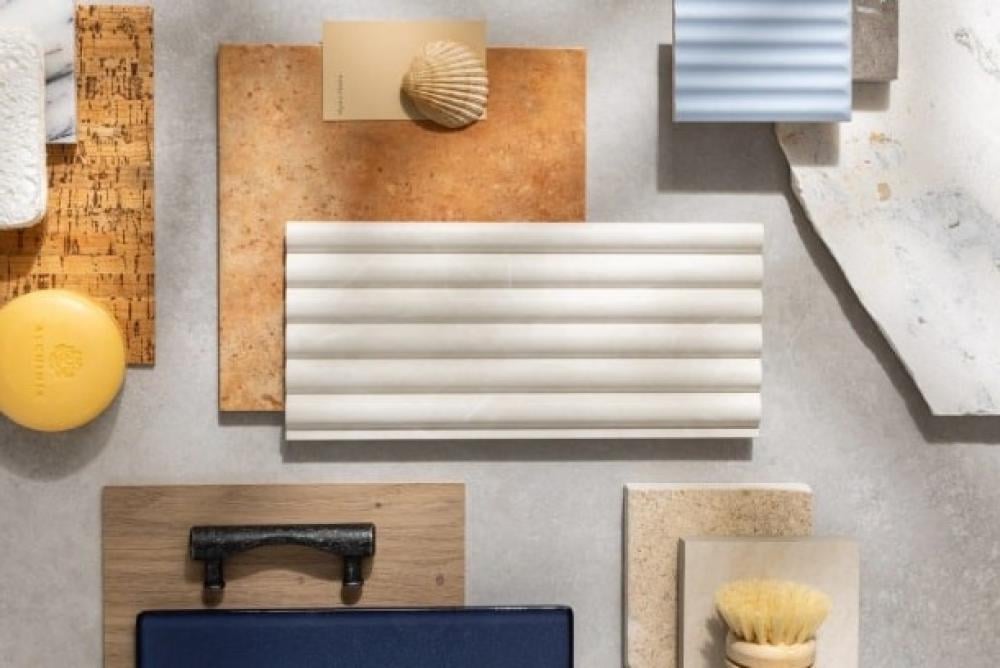Wall and ceiling cladding is one of the finishing touches that add beauty and elegance to any space, but it is not limited to the aesthetic aspect only, but it plays an important role in protecting walls and providing insulation from annoying sounds and temperature changes.
With the continuous development in the world of decoration, there are many different options available for covering walls and ceilings, which makes the selection process fun but can be confusing at the same time.
That's why we wrote this article for you, where we will review the different types of cladding, their advantages and disadvantages, to help you choose the perfect design for your home or office.
What are wall and ceiling coverings?
Let's first learn about these solutions that will prevent the oven from turning into a large oven in the summer, and a refrigerator in the winter.
Wall and ceiling cladding is the process of covering the interior and exterior surfaces of buildings with different materials in order to protect them from external climatic factors and noise as well, and finally to decorate them and add a touch of elegance and sophistication to these surfaces.
These materials can be natural, such as wood and stone, or synthetic, such as plastic and glass.
How wall and ceiling cladding helps protect your home from heat and noise
As we mentioned, wall and ceiling cladding is more than just an aesthetic element; it plays a vital role in protecting your home and providing a comfortable environment. But how?
Now let's find out how and what difference wall cladding will make to the quality of your living at home or at work:
Thermal insulation:
- Preventing heat transfer: Many cladding materials act as a barrier that prevents heat transfer from outside to inside in the summer, and from inside to outside in the winter.
- Reduce energy costs: Thermal insulation helps reduce reliance on air conditioning and heating, resulting in significant savings on energy bills.
- Improved Comfort: Provides a more stable indoor temperature environment, increasing comfort and convenience.
Sound insulation:
- Reduce external noise: Some cladding materials absorb external sounds, providing a quiet environment inside the home.
- Prevent sound transmission between rooms: Helps reduce sound transmission between different rooms, providing greater privacy.
- Improve Sleep Quality: Provides a quiet environment that helps you sleep better.
So it is an indispensable option in homes, allowing you to enjoy comfort and safety inside your home, and it also increases the value of the property in the future if you want to sell or rent it.
Below we summarize for you in quick points the benefits of wall insulation and cladding:
- Aesthetics: Wall coverings add an aesthetic touch and contribute to creating a comfortable and distinctive atmosphere.
- Protection: Protects walls from damage caused by moisture and shock.
- Insulation: Provides sound and heat insulation, increasing comfort inside the room.
- Variety: Available in a variety of designs and colors to suit all tastes.
- Ease of cleaning: Most types of upholstery are easy to clean and maintain.
Types of wall coverings
Wall coverings can be classified into two main types:
1. Interior cladding:
- Paints: The most popular and most diverse option in terms of colors and types.
- Wallpaper: Offers a wide range of designs and shapes.
- Fabrics: Used to cover walls and add a warm touch.
- Wood: Whether it is wood panels such as parquet or plywood, it adds a natural and elegant touch.
- Tiles: Used in kitchens and bathrooms for their ease of cleaning and resistance to moisture.
- Gypsum board: used to create suspended ceilings or arched walls.
2. External cladding:
- Gypsum: Used to cover exterior walls and make them more resistant to weather factors.
- Aluminum: Used in places where high corrosion resistance is required.
- Wood: Used to cover exterior walls and give a natural touch.
- Stone: It is considered one of the finest types of exterior cladding and gives a classic appearance.
Comparison of wall cladding types
Tips for choosing the right type
- Budget: Determine how much you want to spend.
- Where to use: Choose the appropriate type for each room based on its environmental conditions.
- Decorative style: The type of cladding should match the overall decorative style.
- Ease of maintenance: Choose a type that is easy to clean and maintain.
- Shelf life: Some types last longer than others.
Wall and ceiling cladding is one of the essential factors that affect the appearance of the home and make us feel comfortable. With the wide variety of options available, it has become easy to choose the perfect design that reflects your personal taste. We advise you to consult an interior decoration specialist to help you choose the right type and implement the project professionally. And remember that we at Al-Ghamlas are always here to help you.

